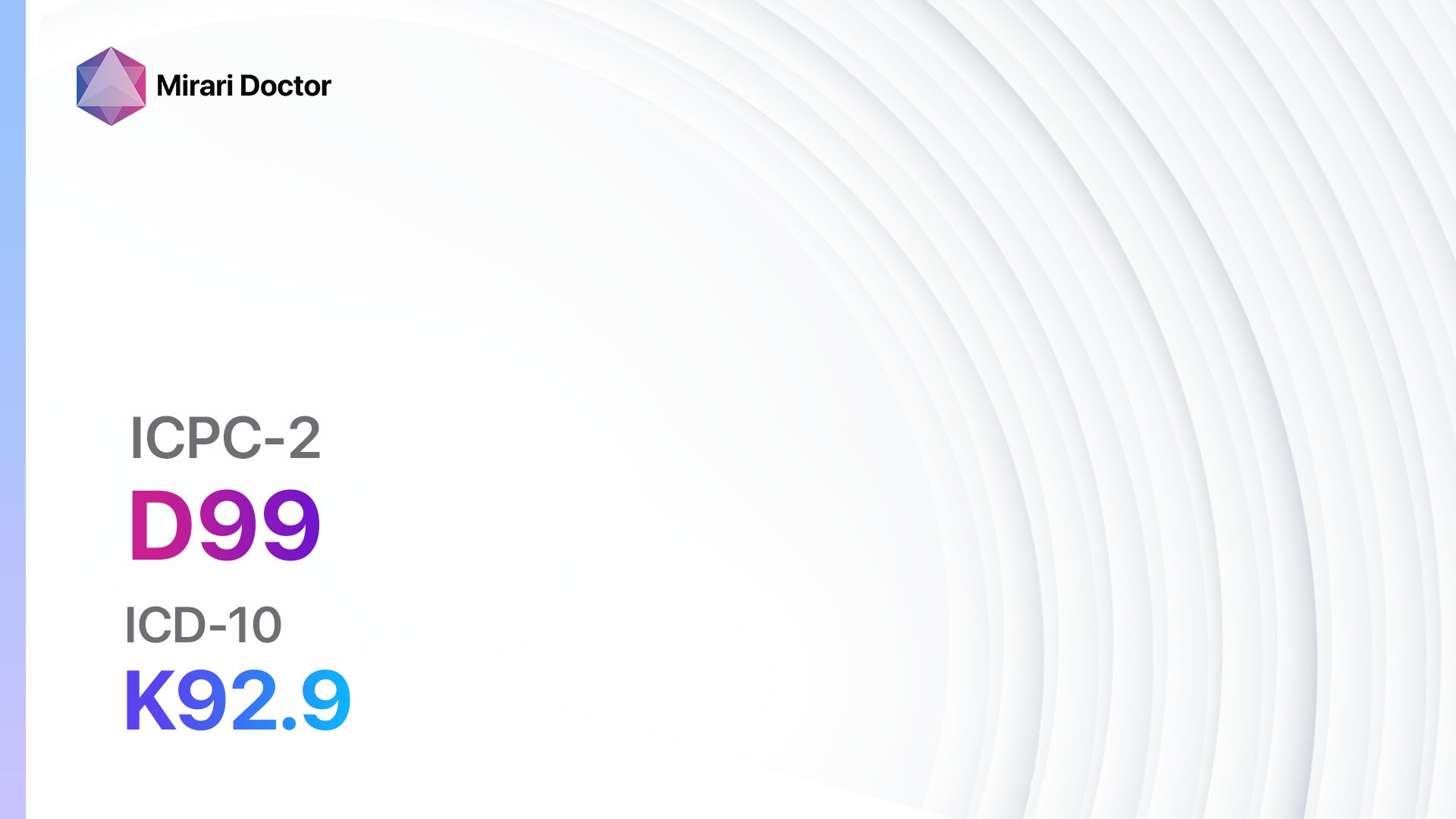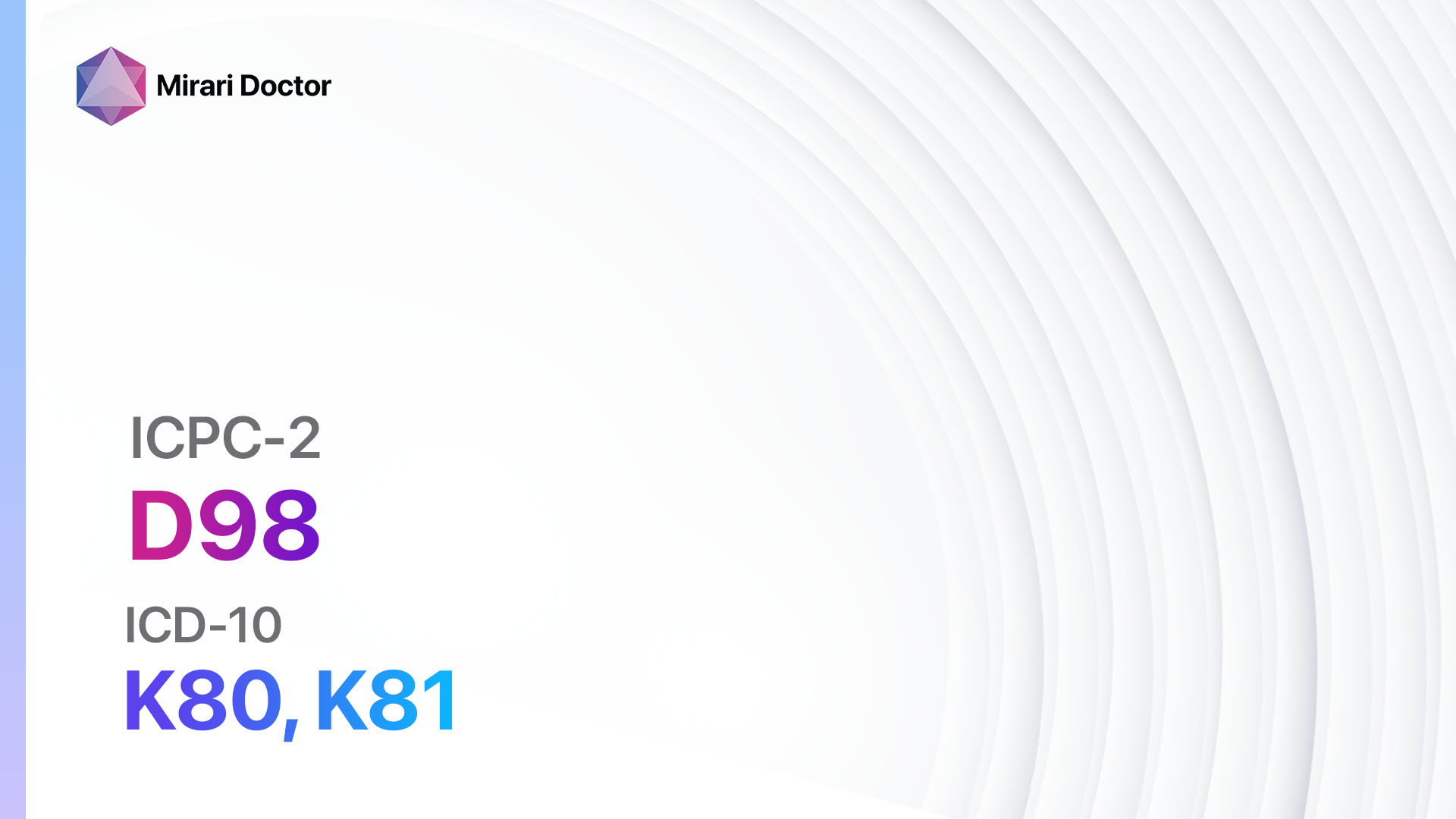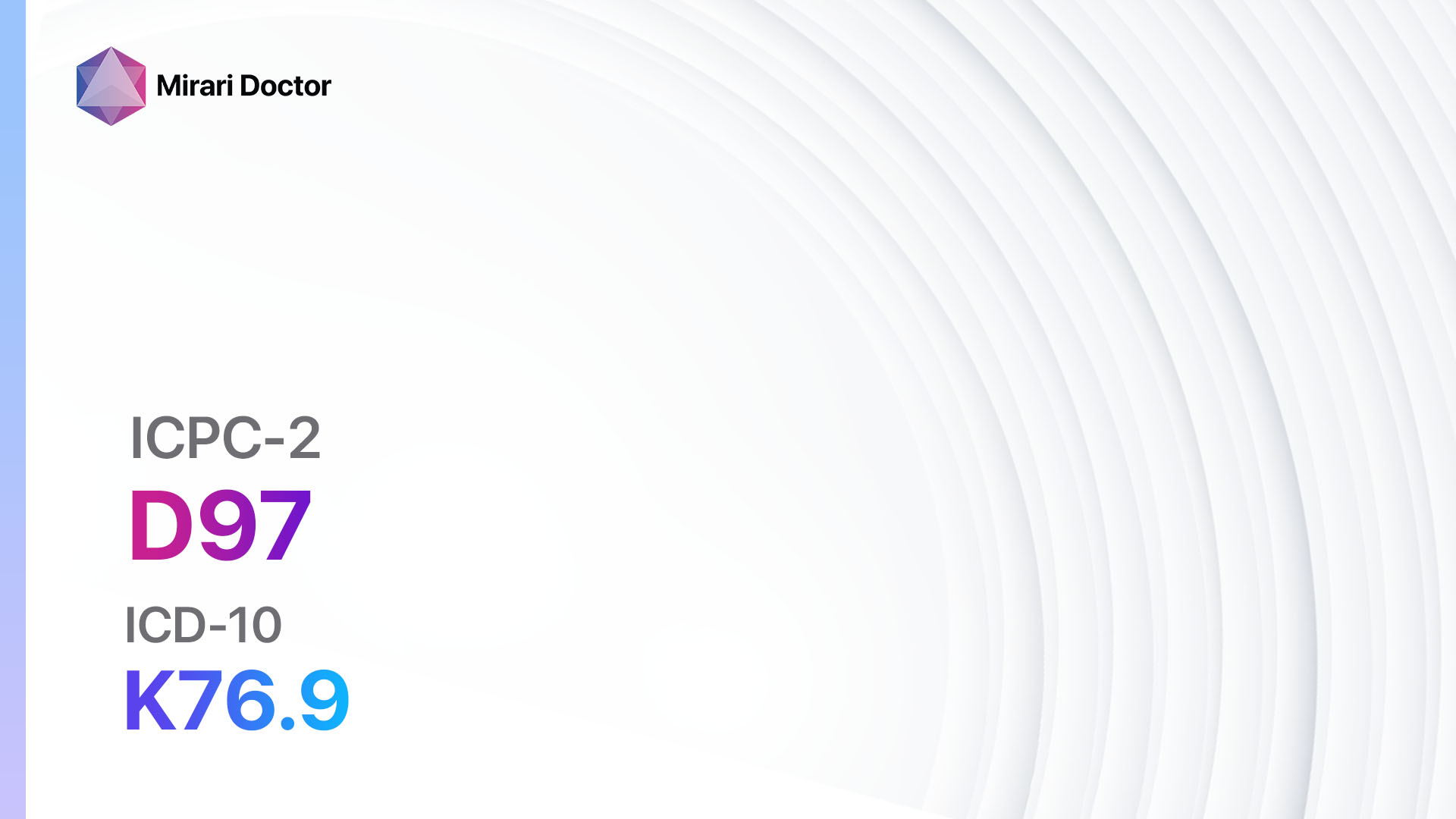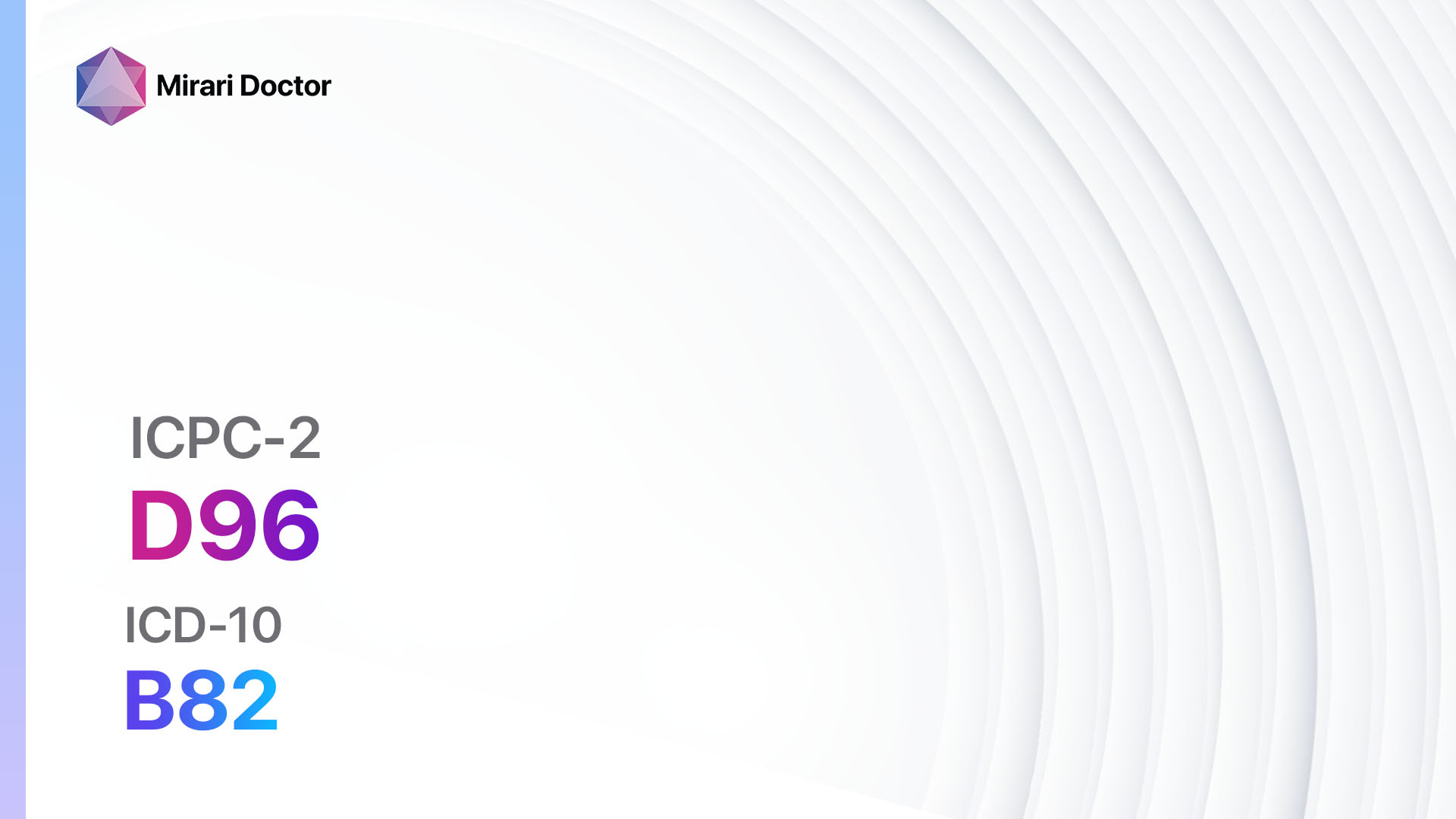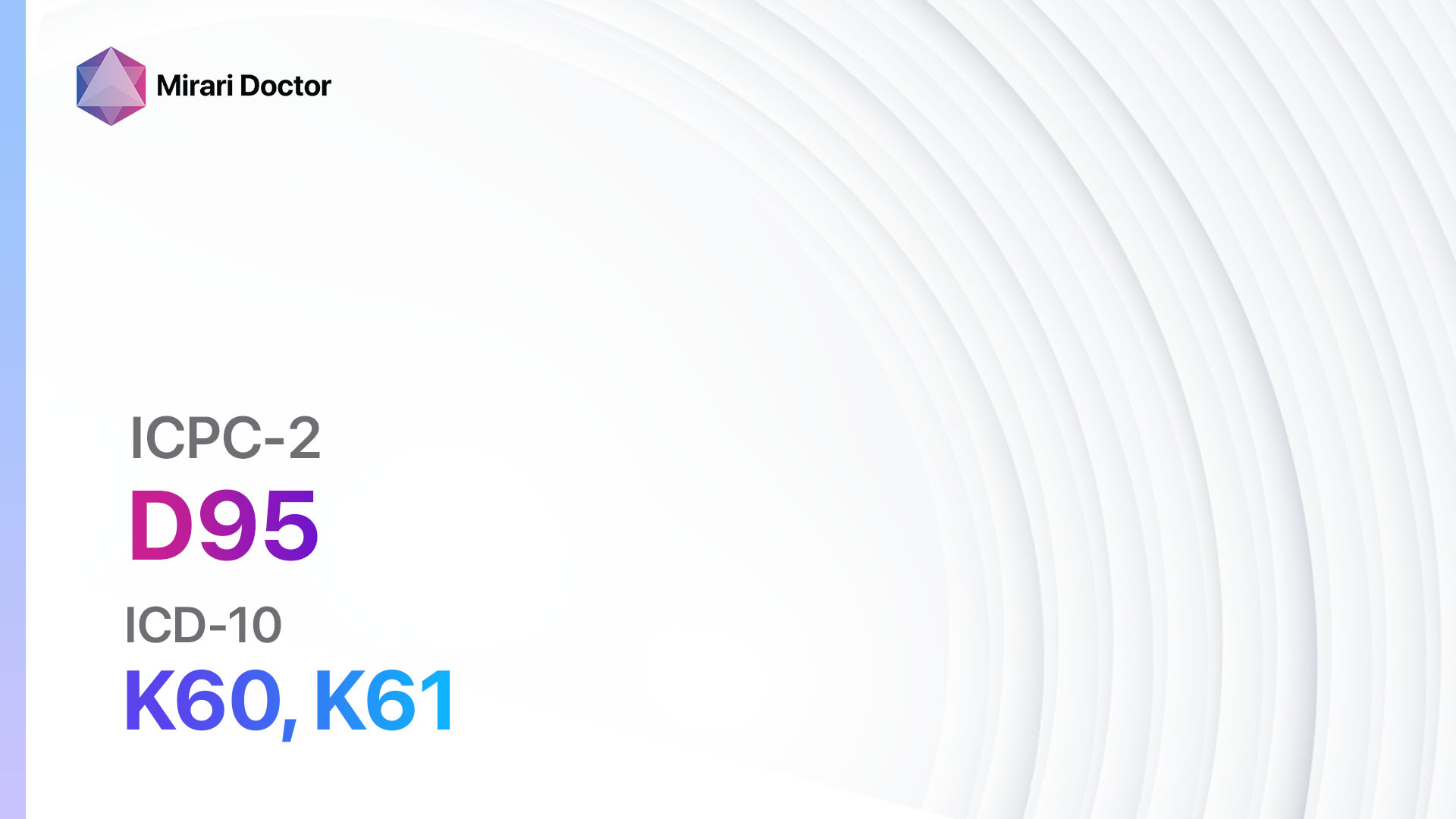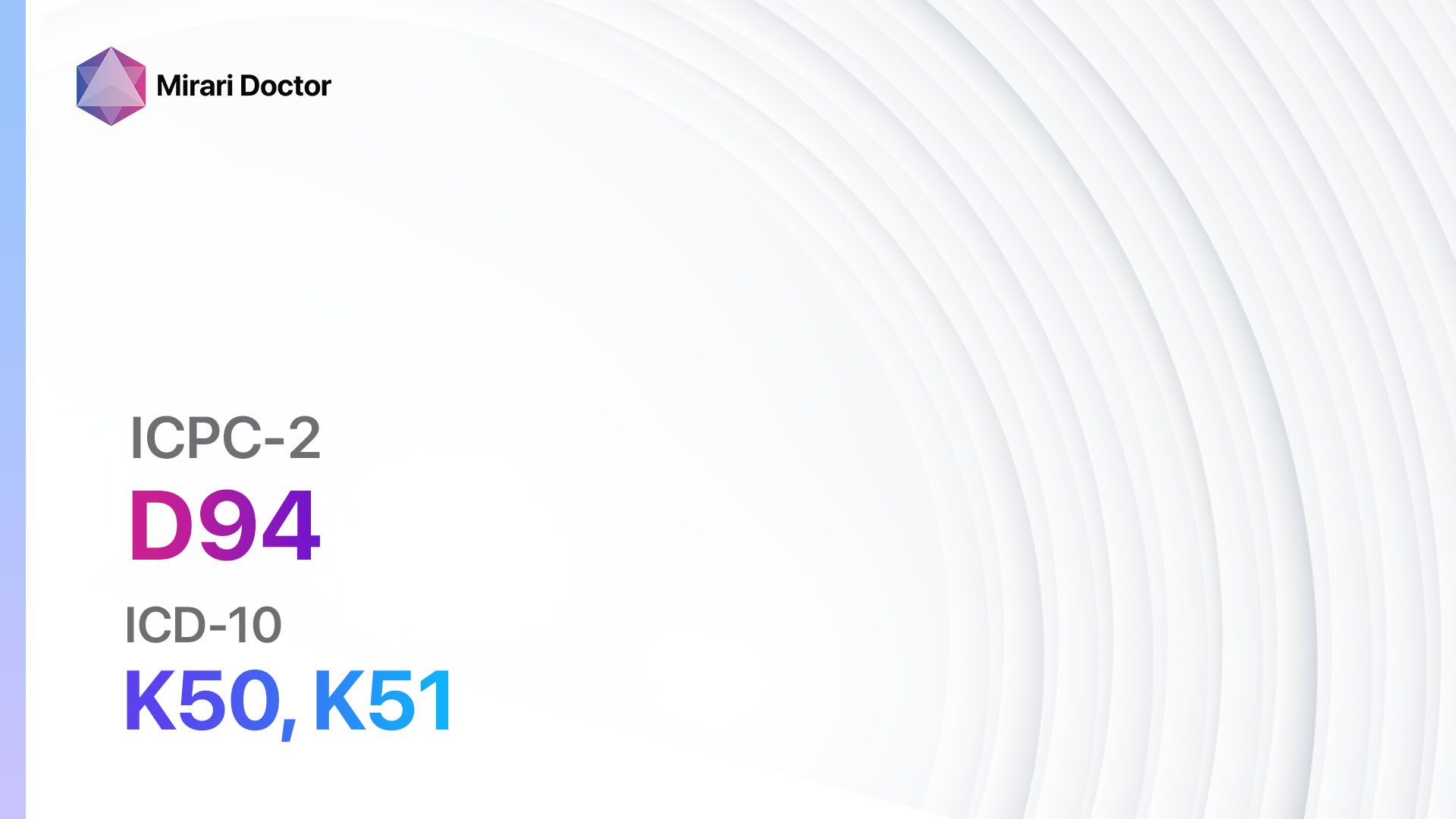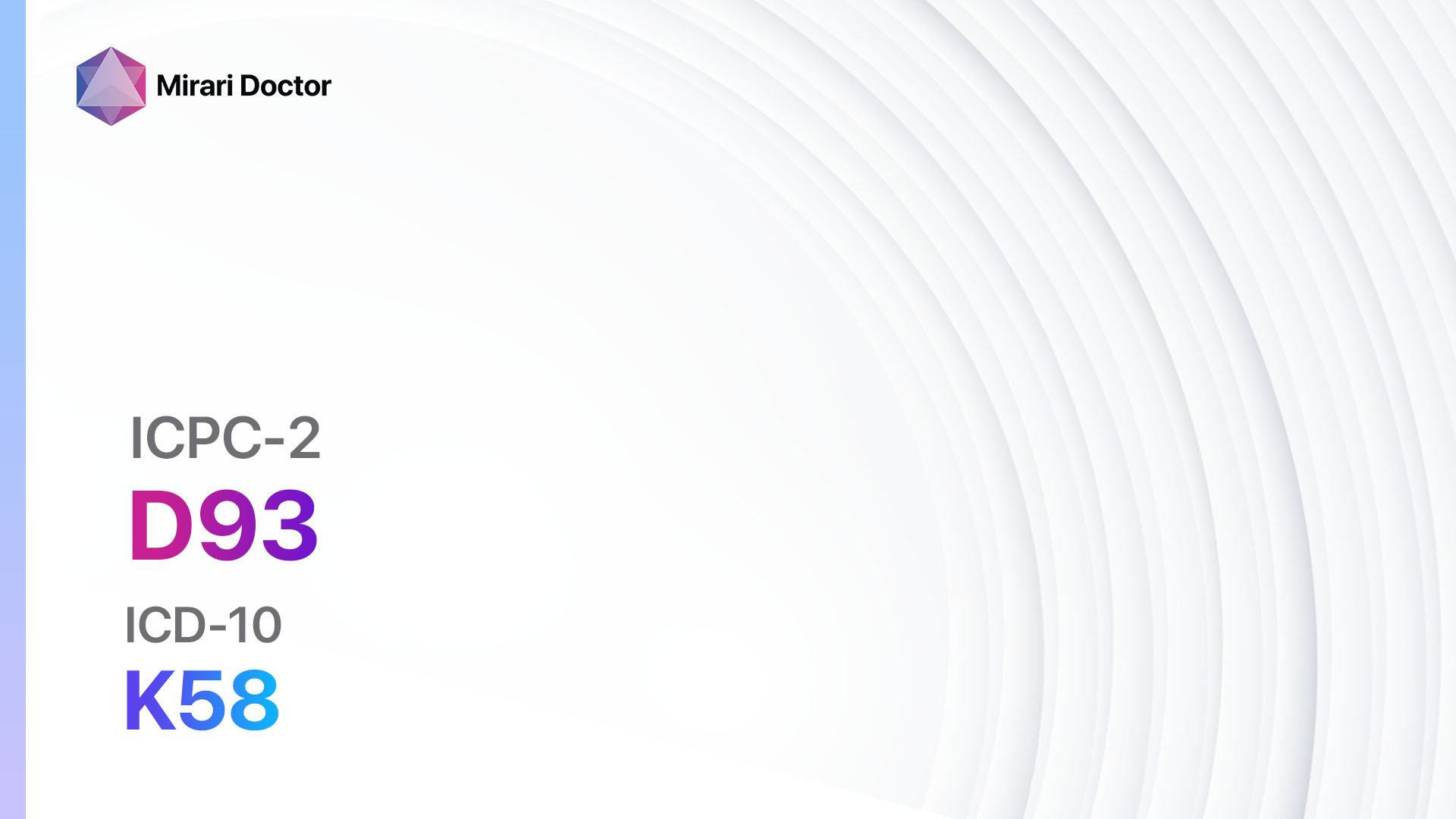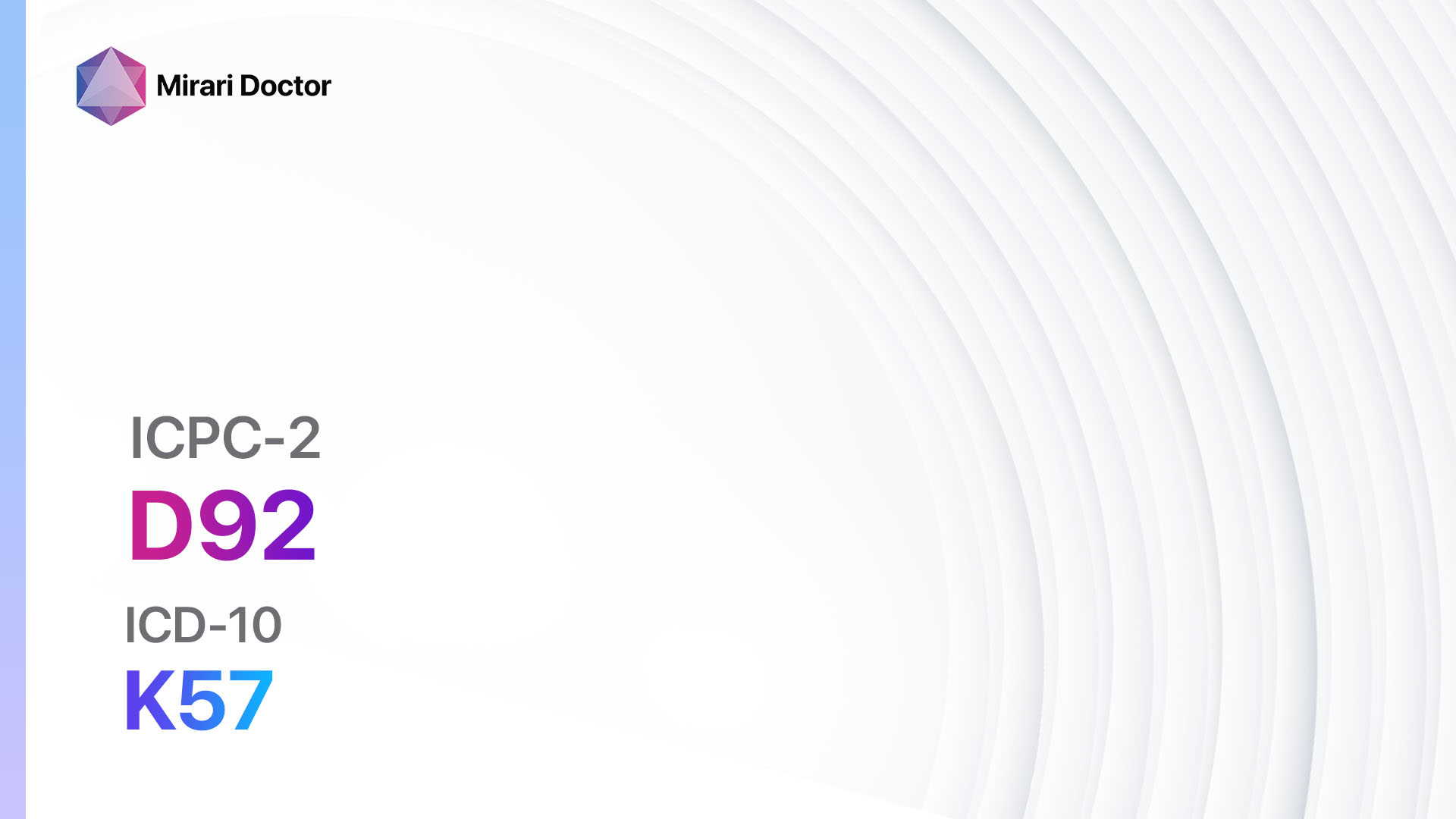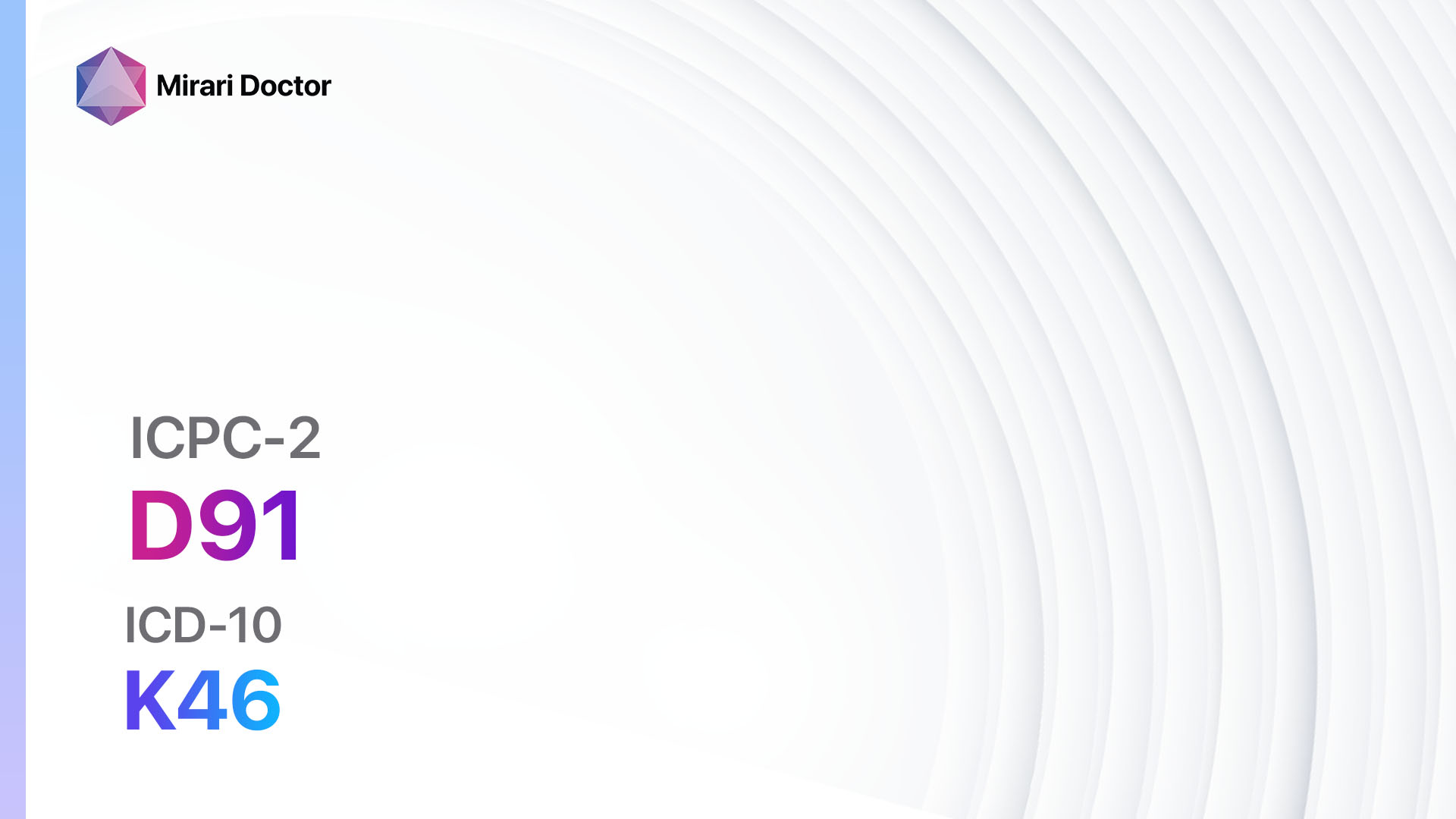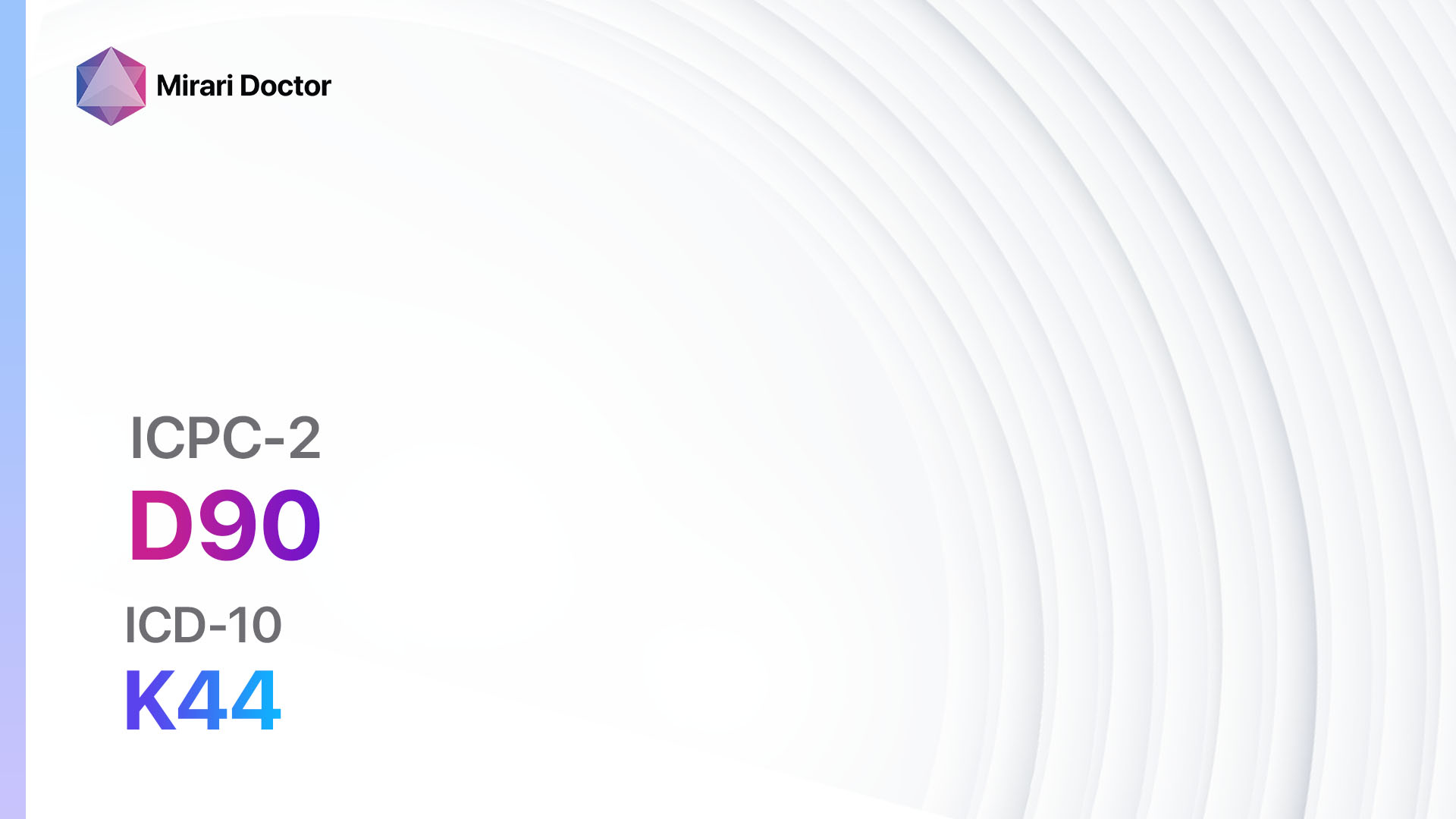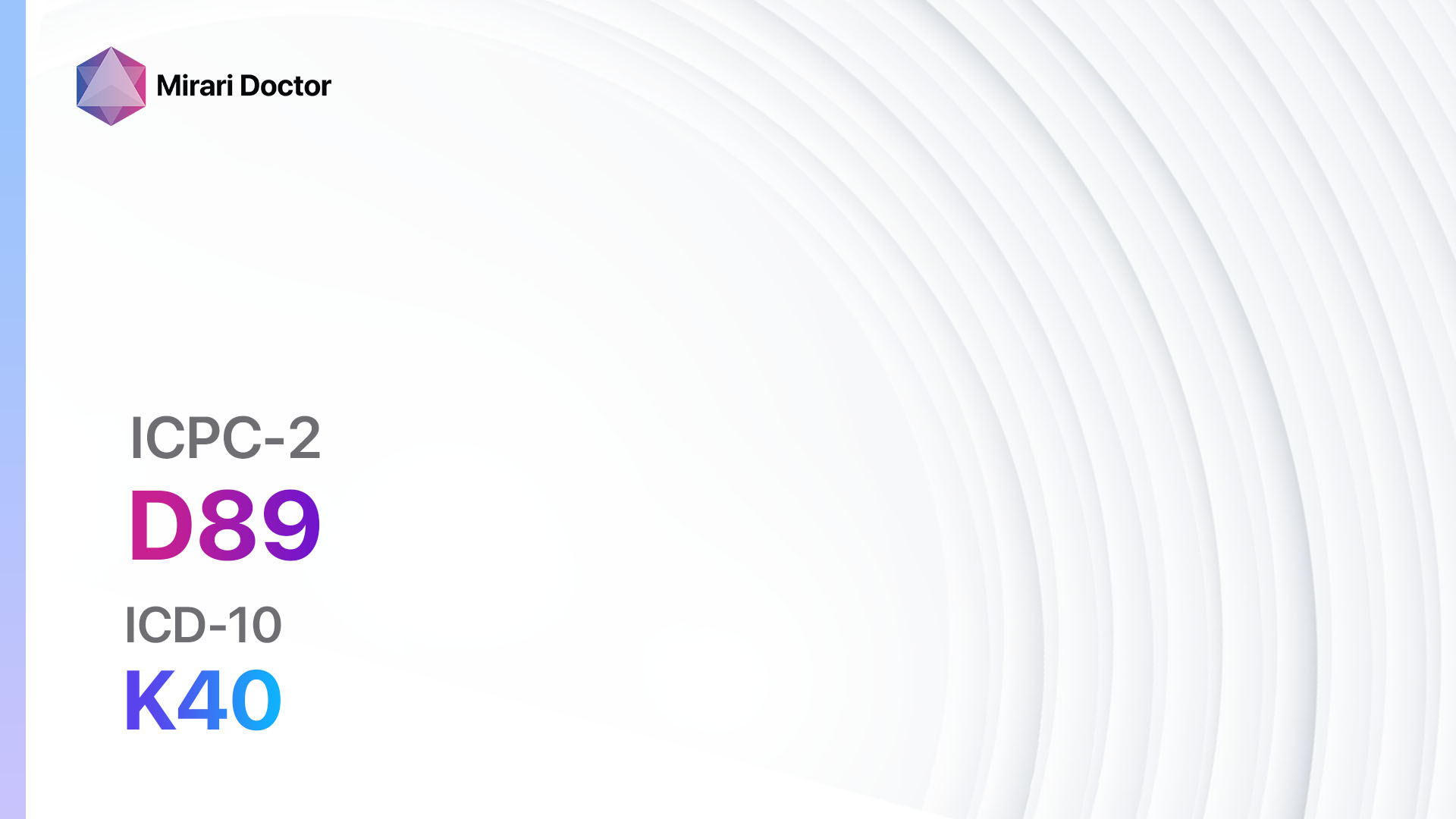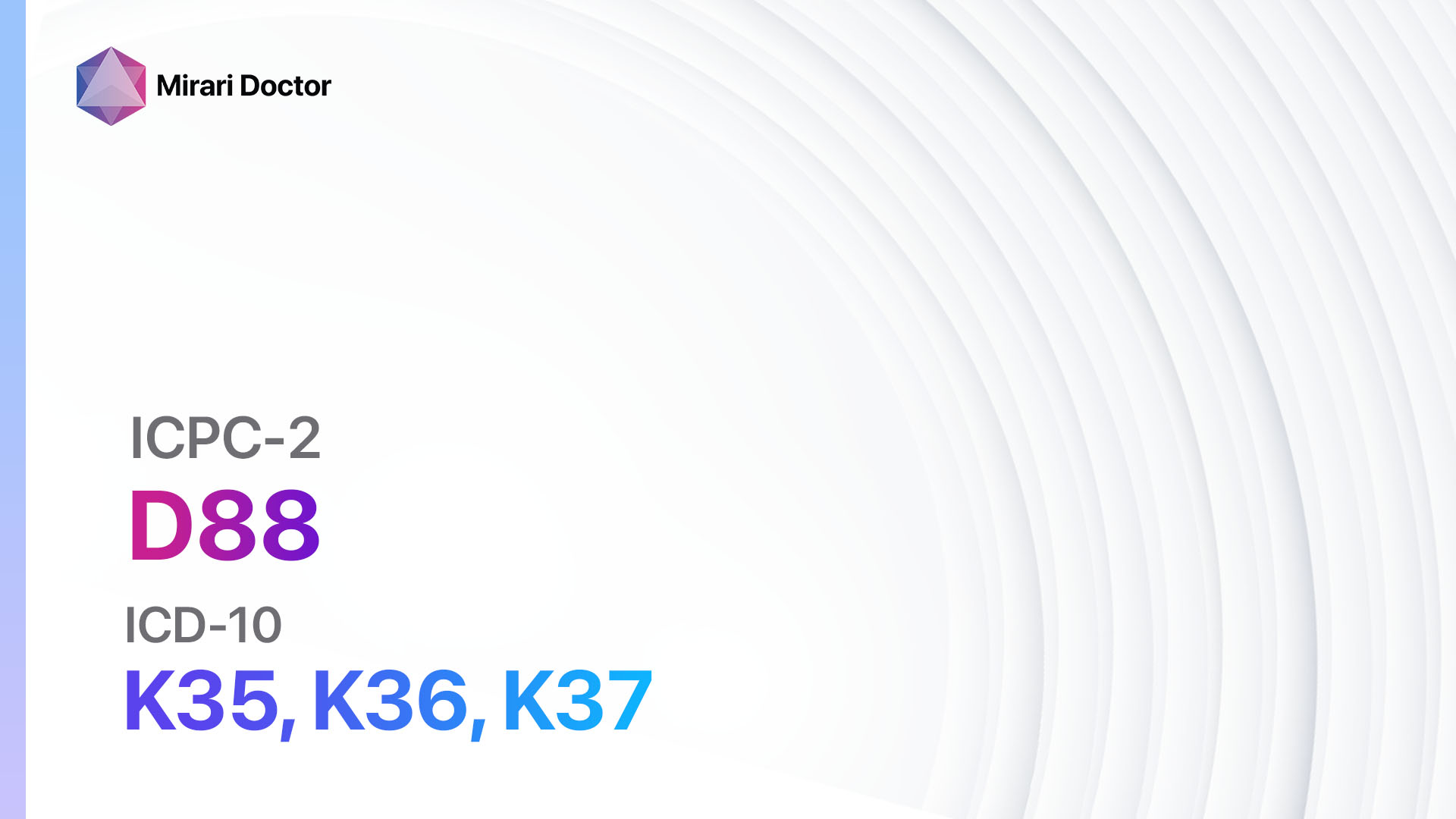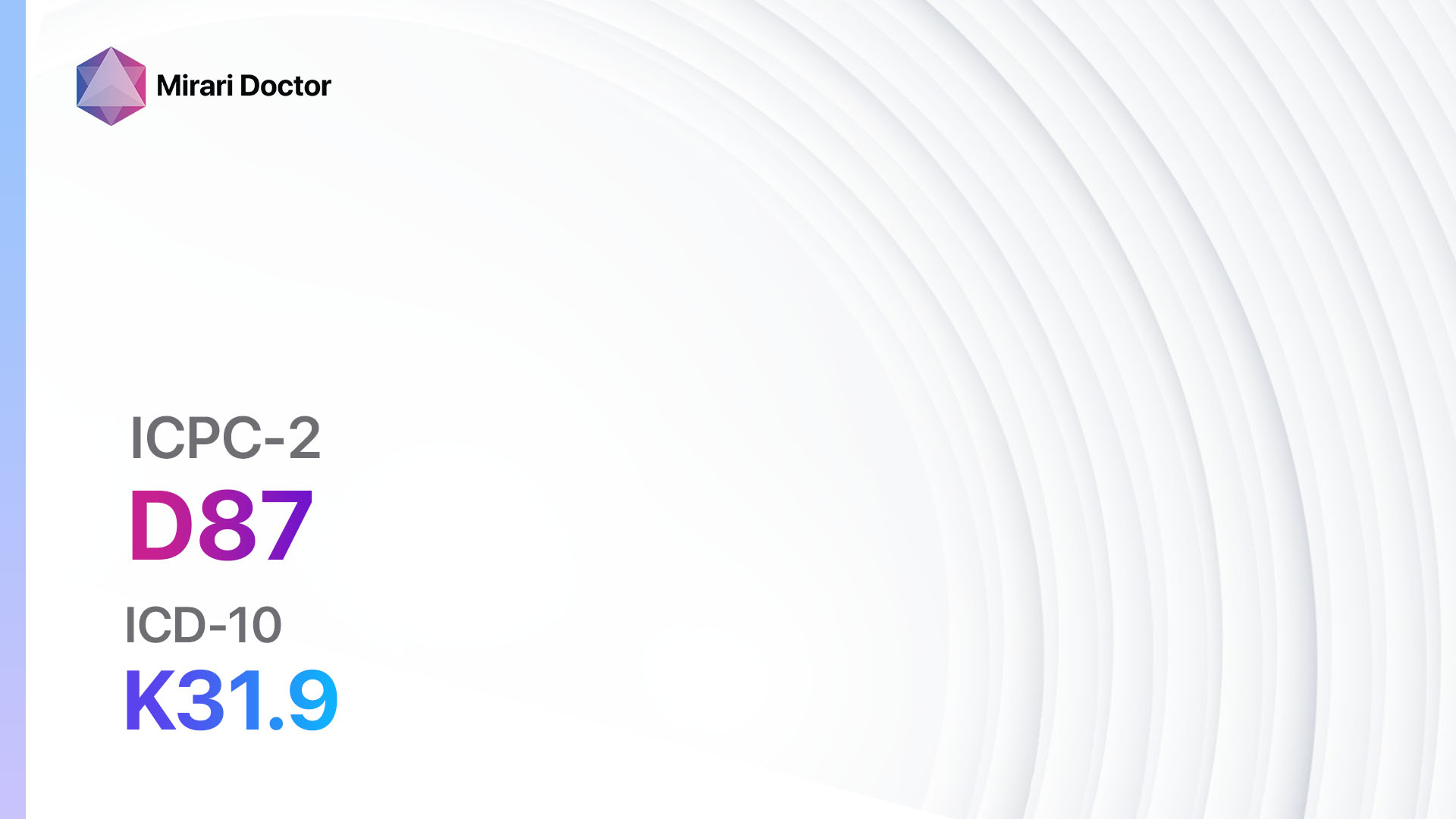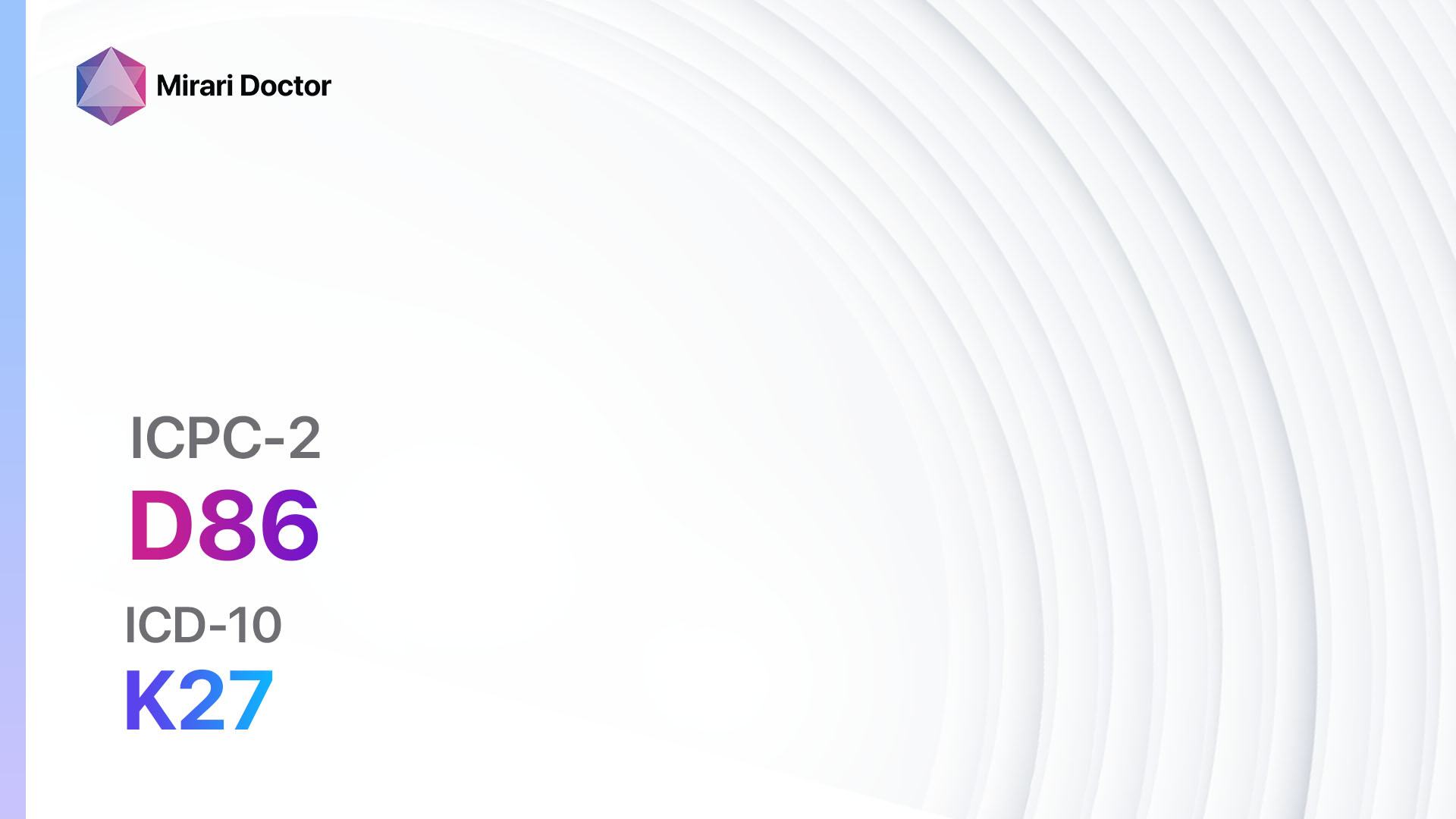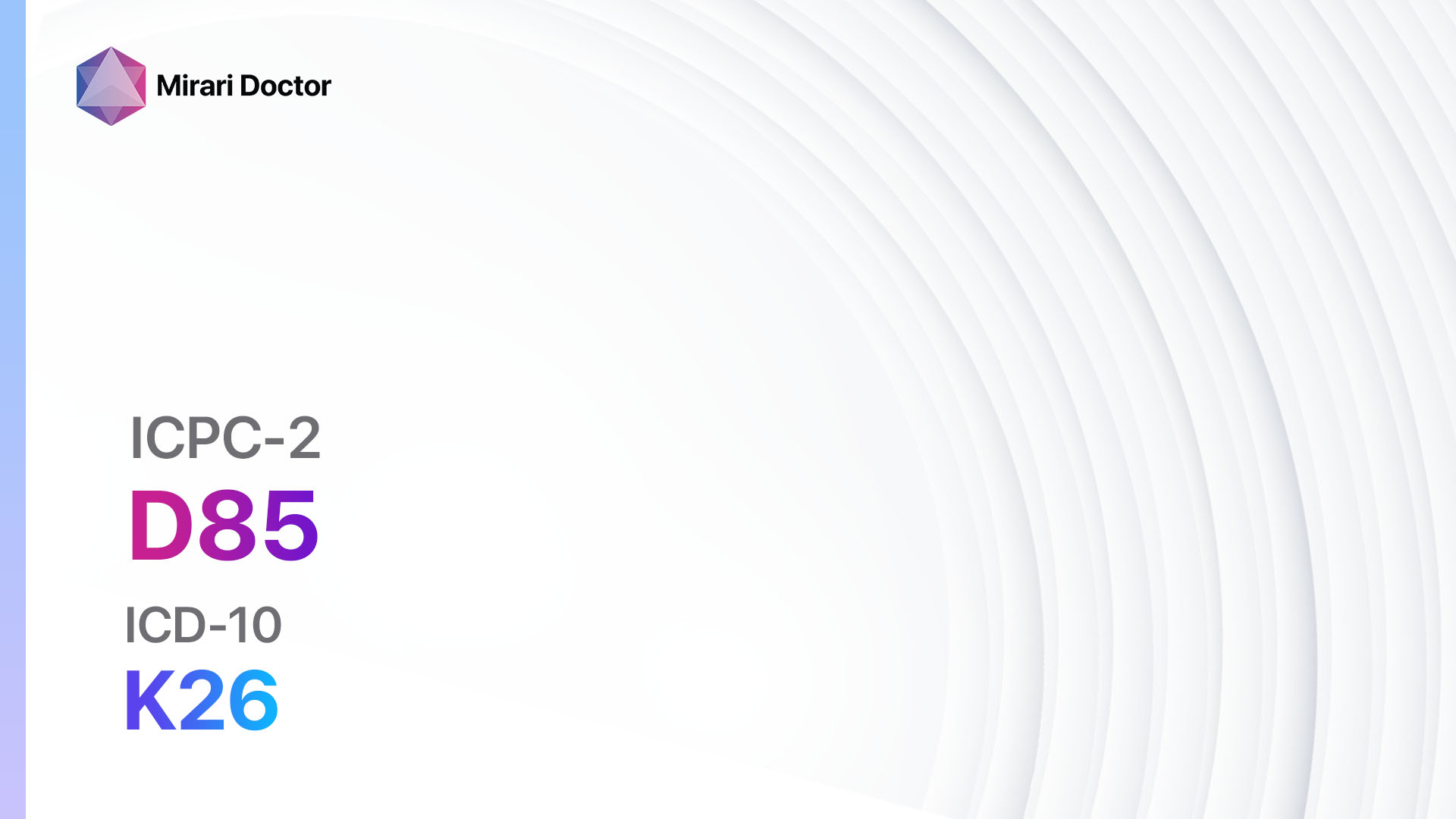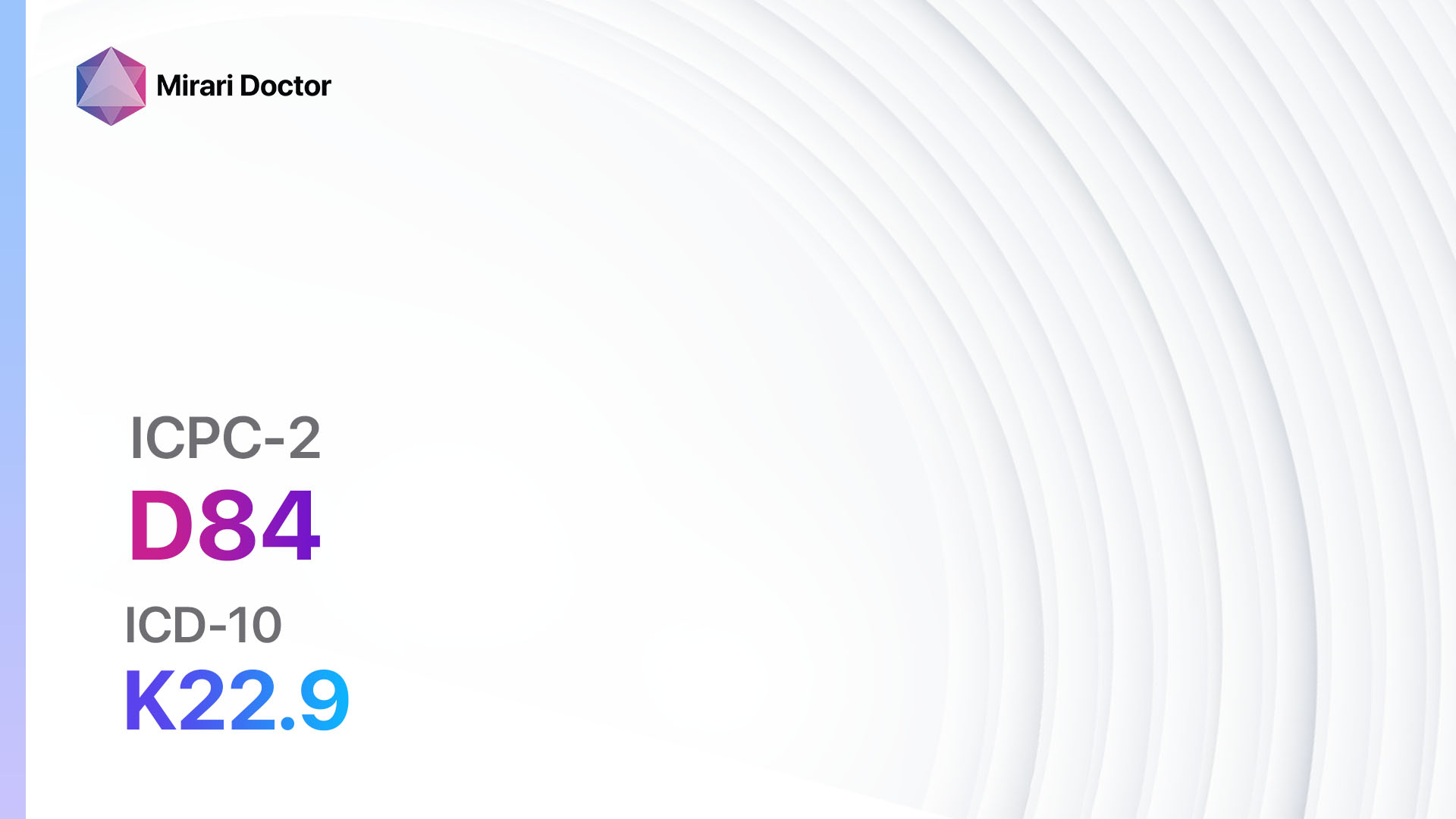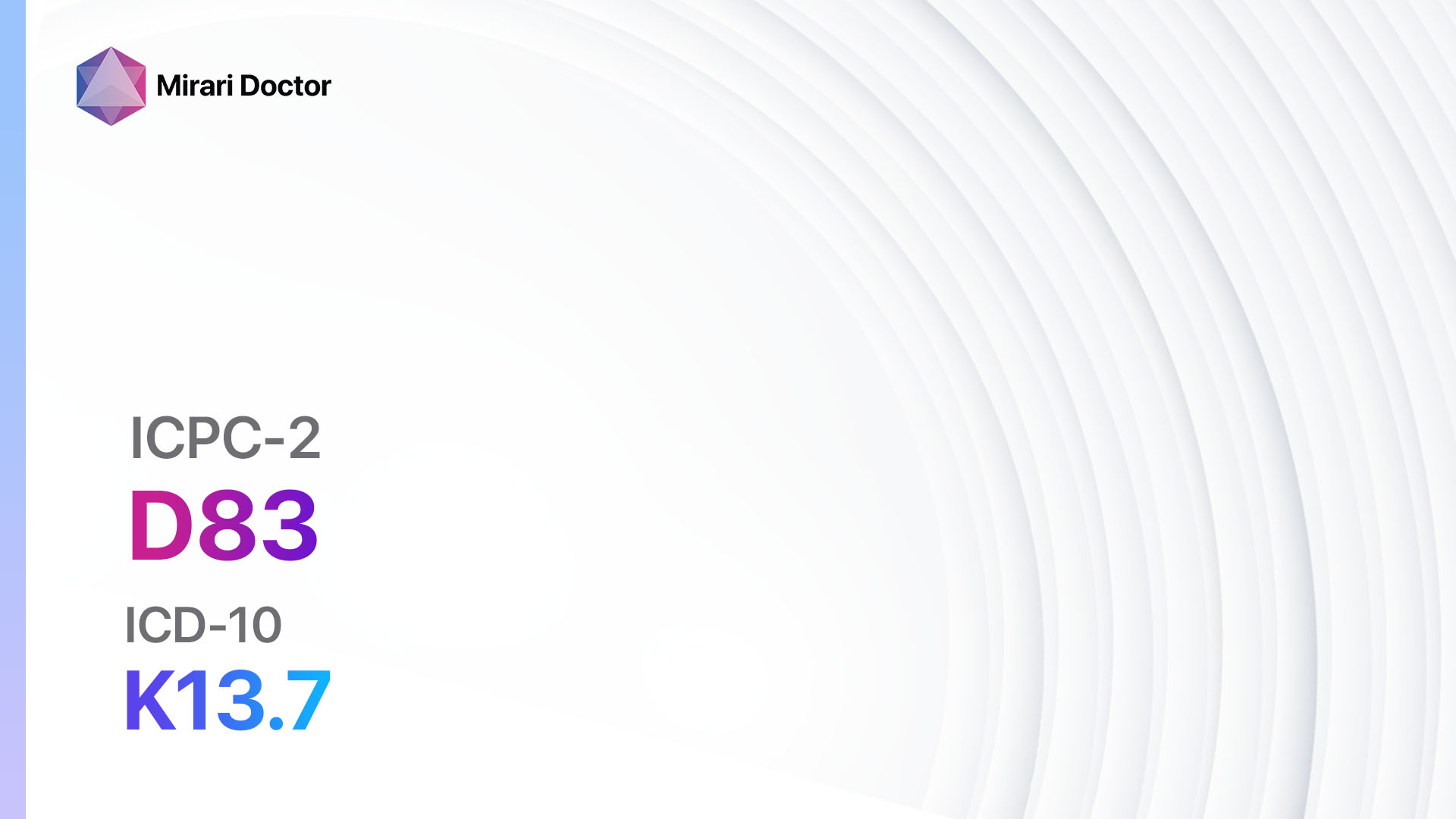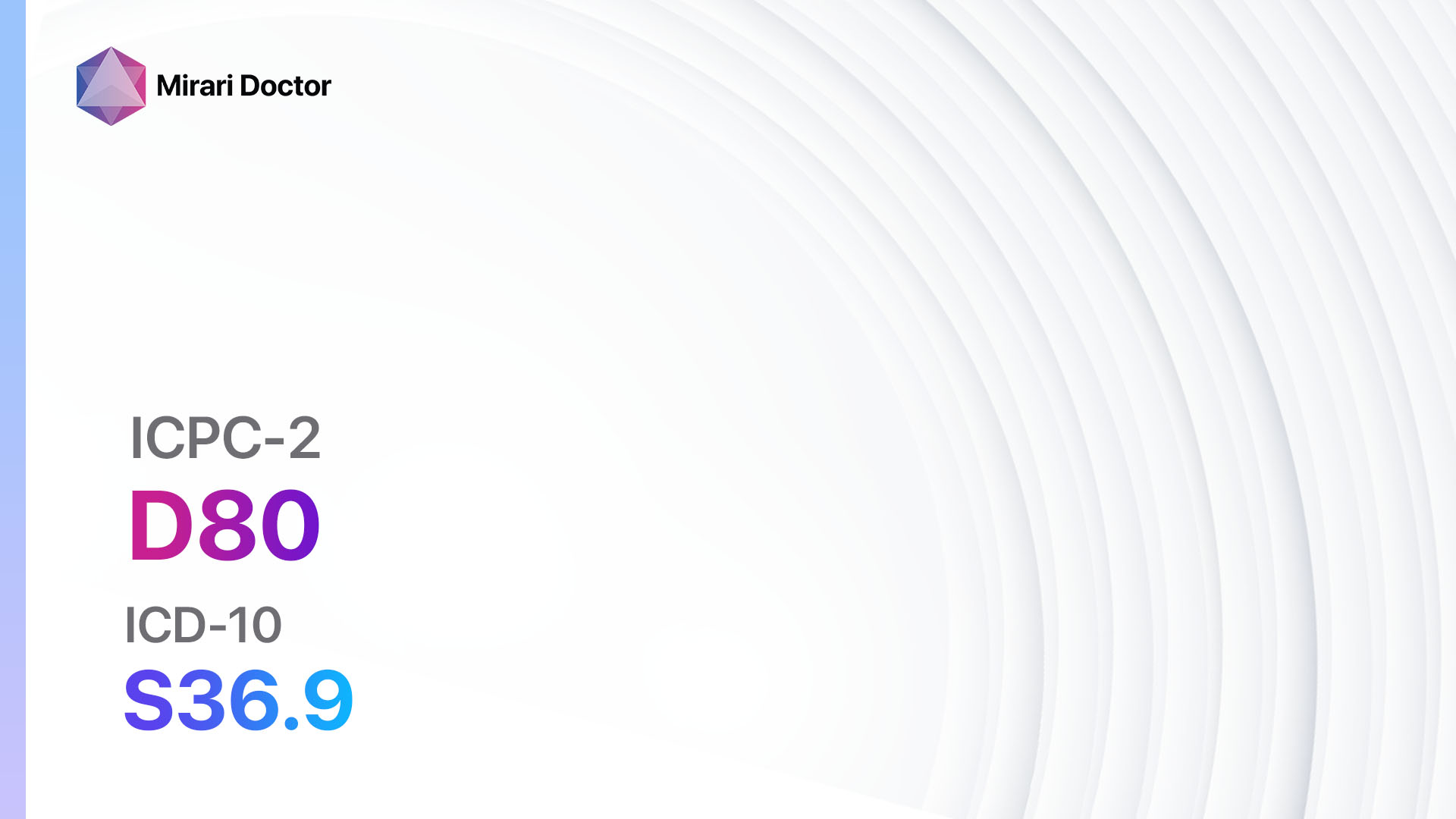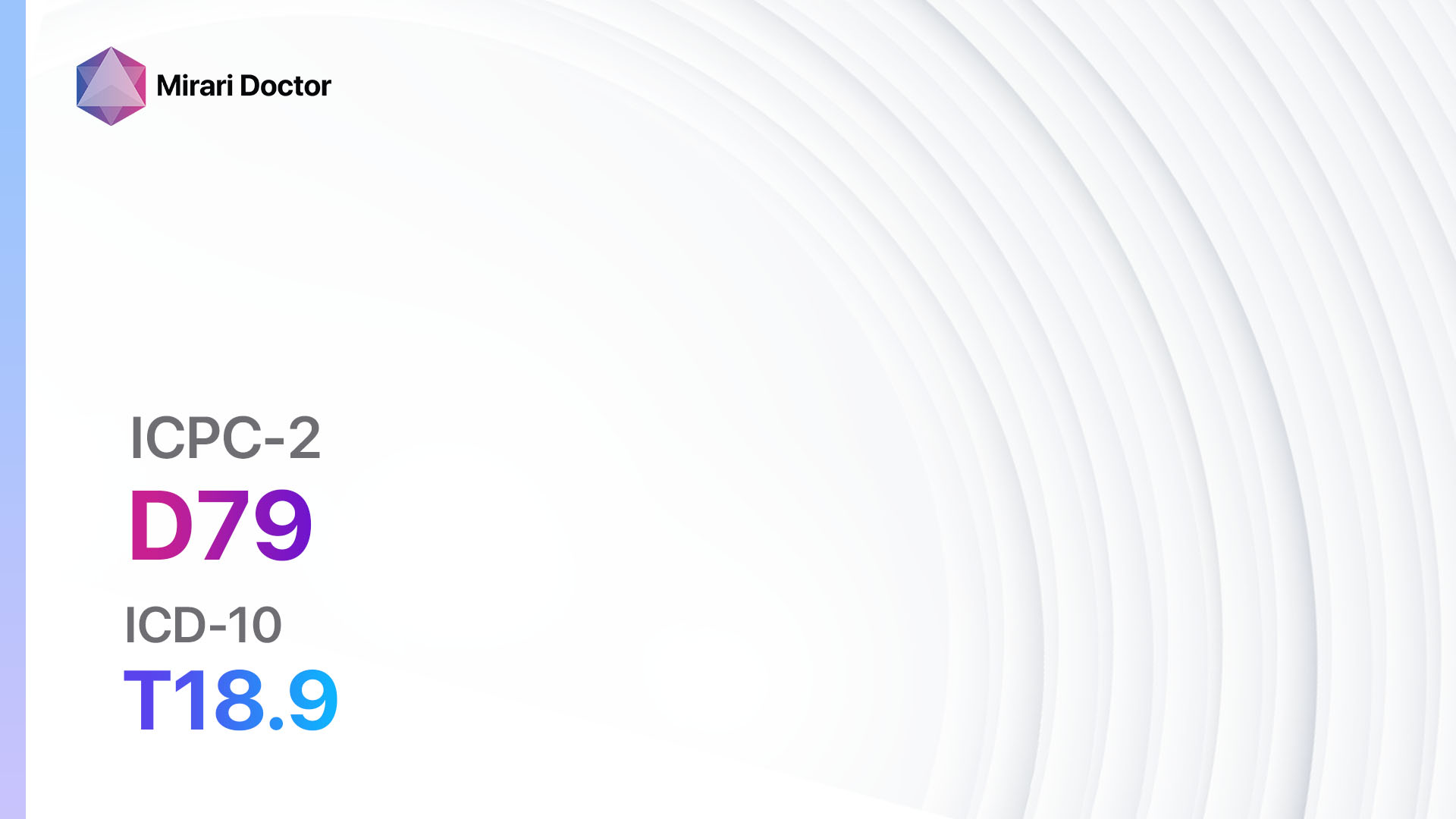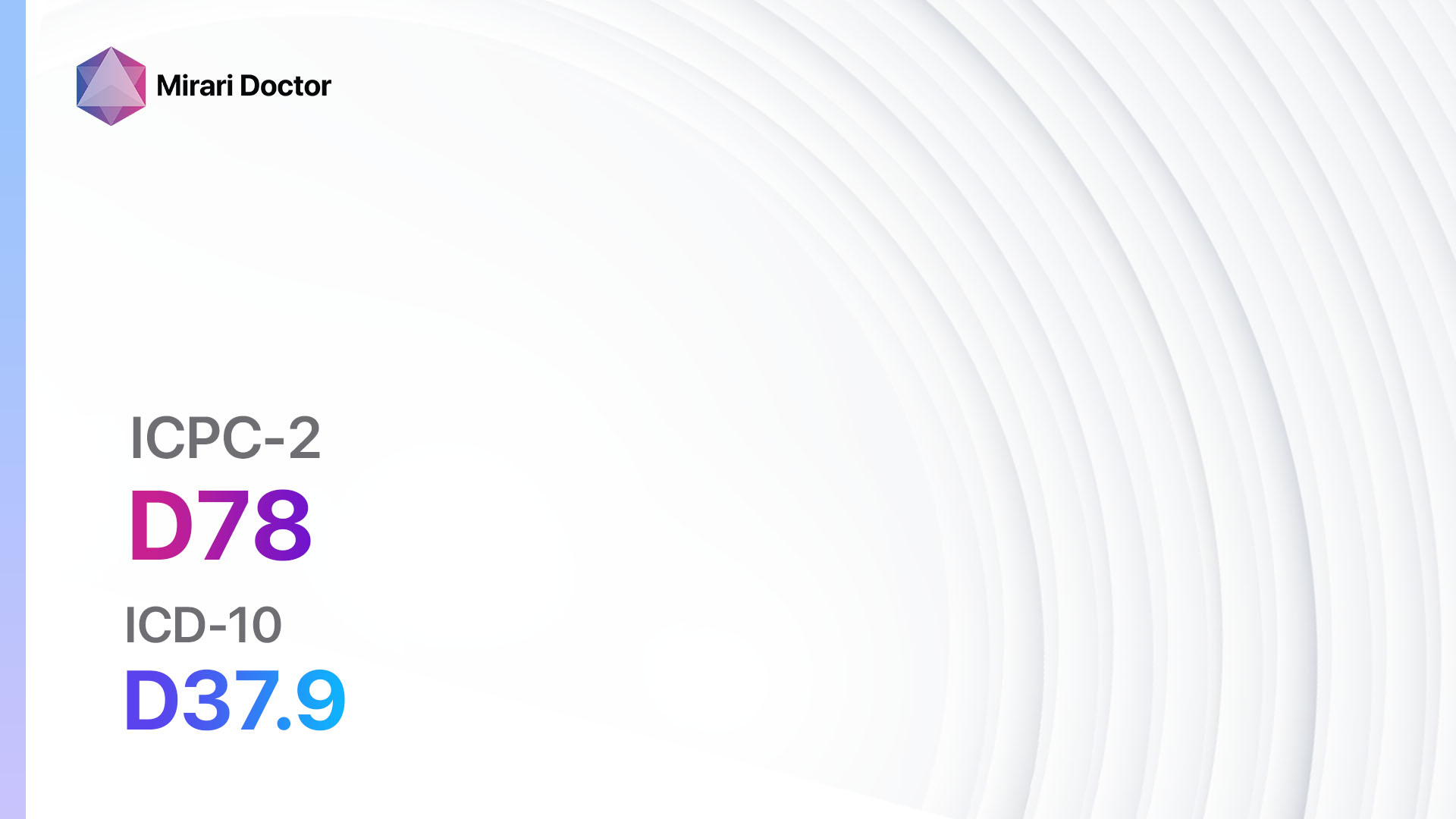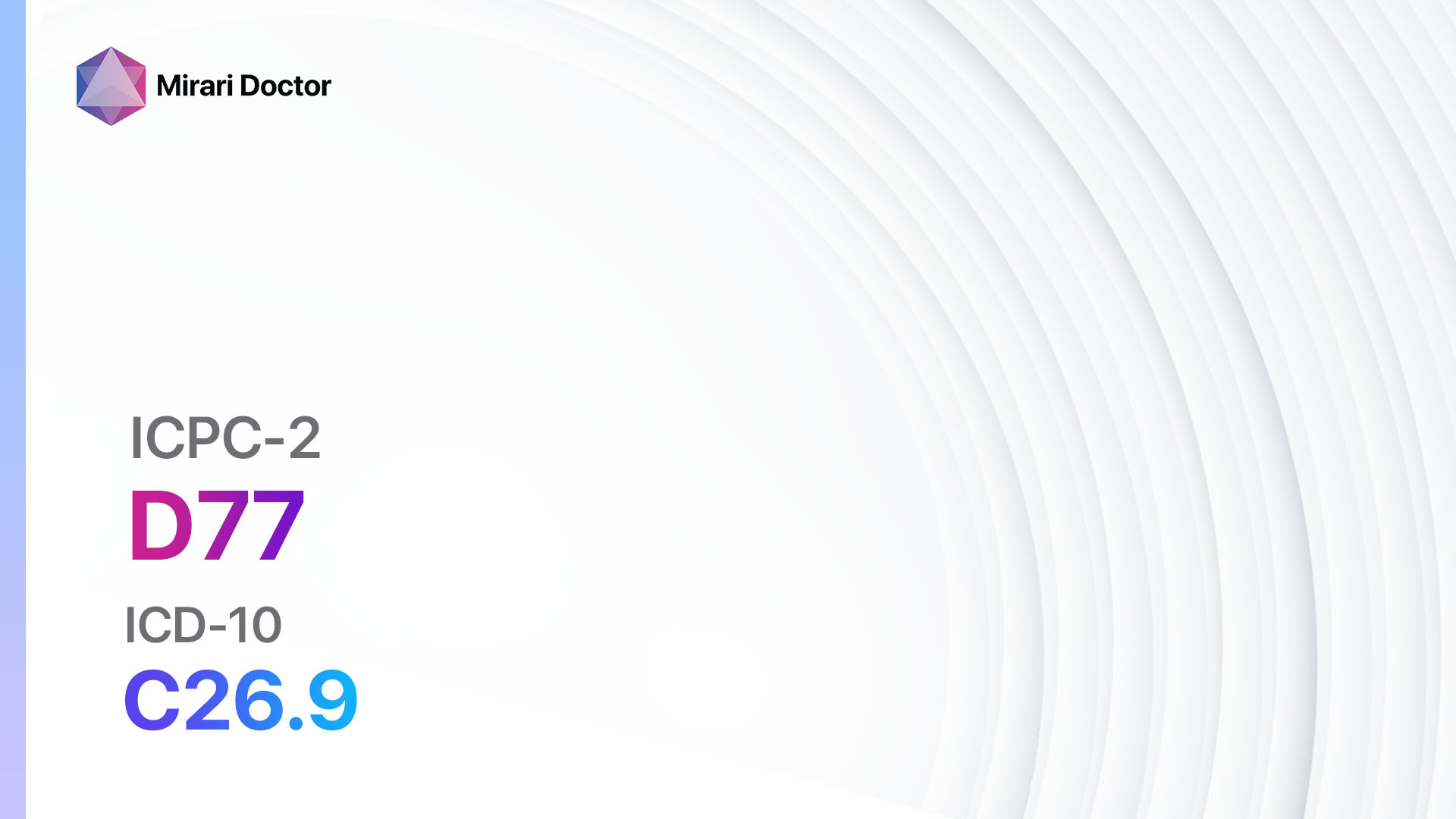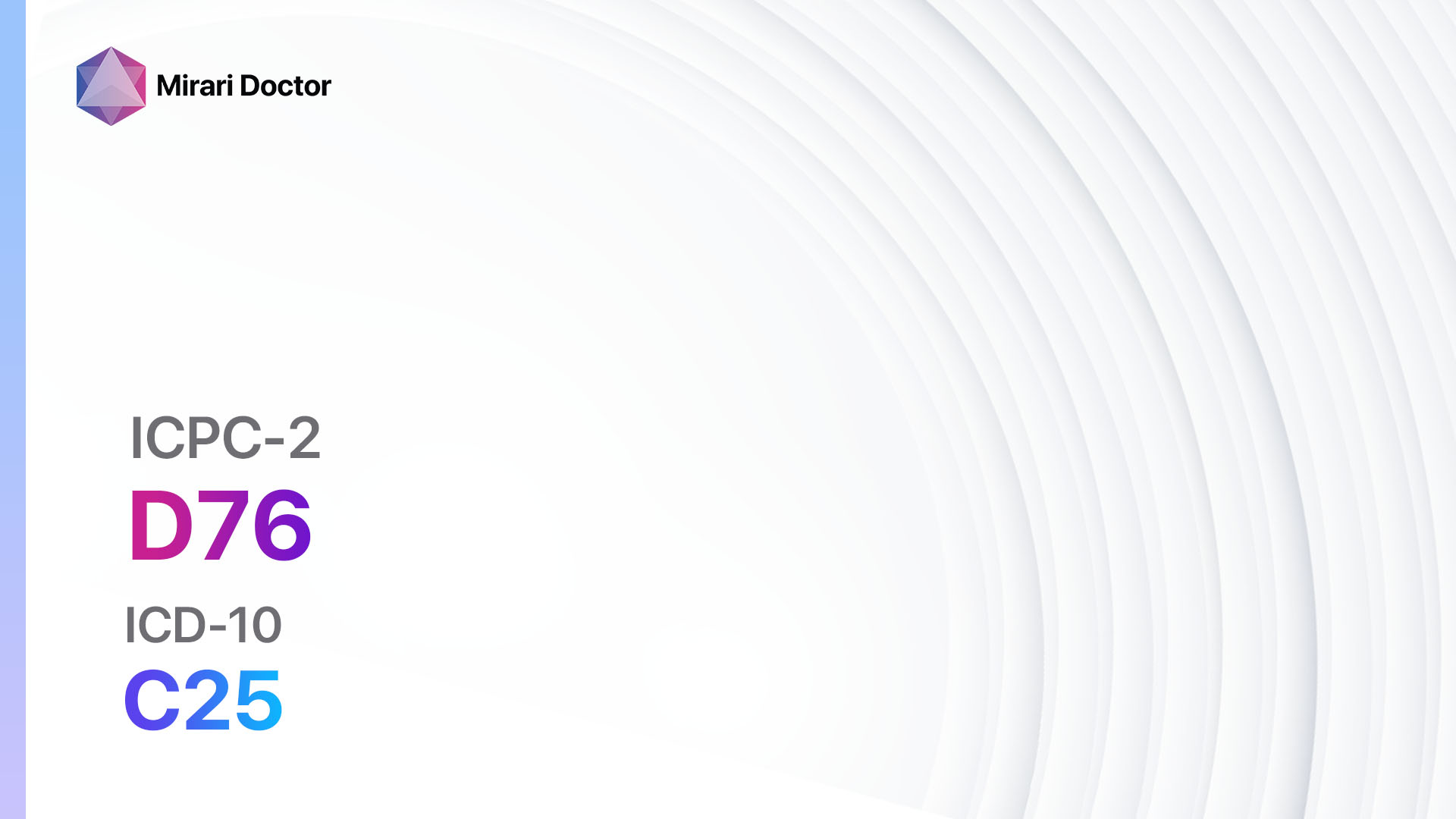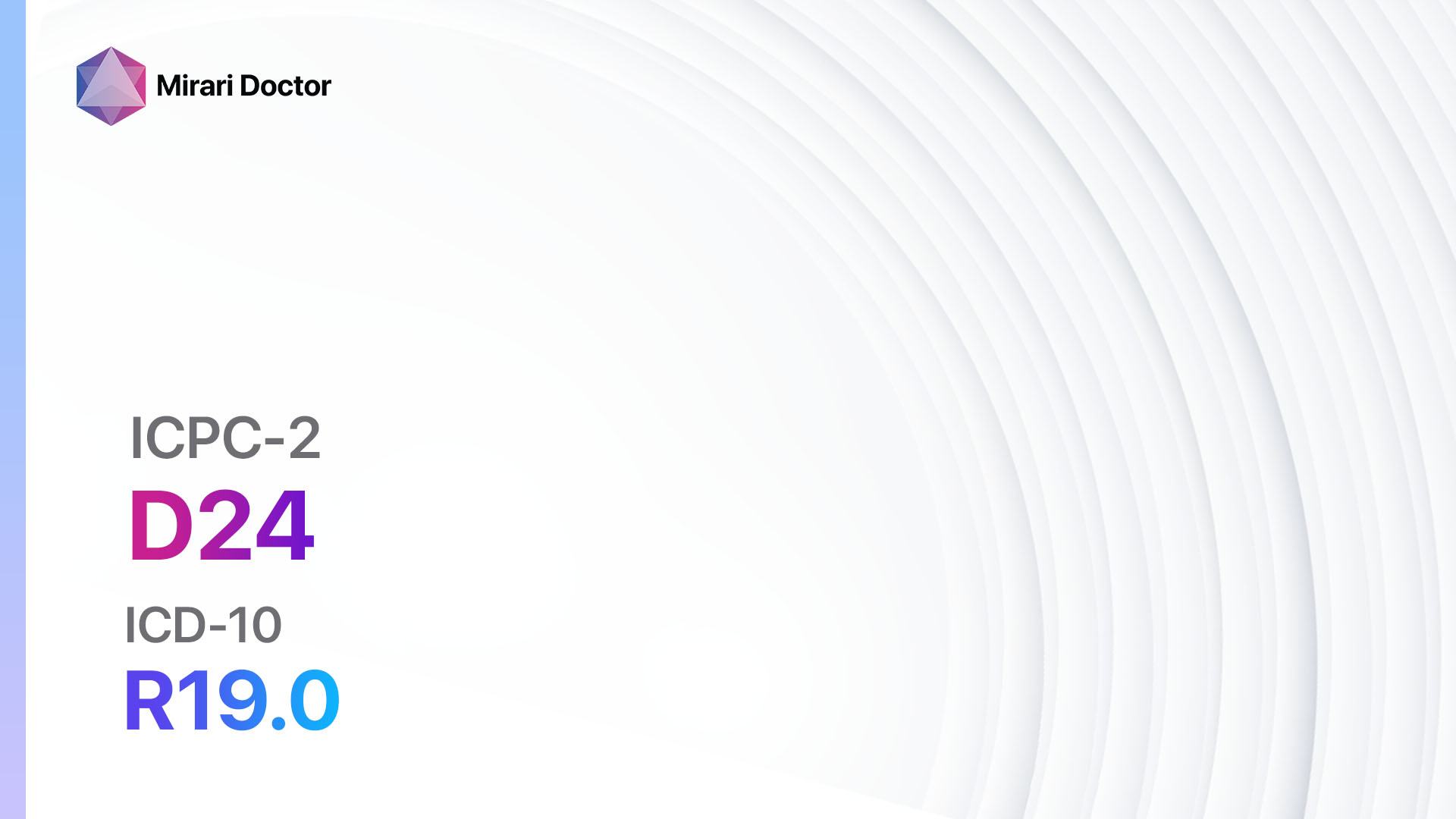
Introduction
Abdominal mass NOS refers to the presence of an abnormal lump or swelling in the abdominal area that does not have a specific diagnosis. It is a significant finding that requires further evaluation to determine the underlying cause. The aim of this guide is to provide a step-by-step approach to diagnosing and managing abdominal mass NOS.[1][2]
Codes
- ICPC-2 Code: D24 Abdominal mass NOS[3]
- ICD-10 Code: R19.0 Intra-abdominal and pelvic swelling, mass and lump[4
Symptoms
- Abdominal swelling: The presence of a visible or palpable lump in the abdominal area.[5]
- Abdominal pain: Discomfort or pain in the abdomen, which may be llocalized or diffuse.[6]
Causes
- Benign tumors: Non-cancerous growths, such as lipomas or fibroids, can cause abdominal masses.[7]
- Malignant tumors: Cancerous growths, such as ovarian cancer or pancreatic cancer, can present as abdominal masses.[8]
- Organ enlargement: Enlargement of organs, such as the liver or spleen, can result in the presence of an abdominal mass.[9]
- Inflammatory conditions: Conditions like diverticulitis or appendicitis can cause localized swelling and the formation of an abdominal mass.[10]
- Fluid accumulation: Accumulation of fluid in the abdominal cavity, known as ascites, can lead to the development of an abdominal mass.
Diagnostic Steps
Medical History
- Gather information about the patient’s symptoms, including the duration, severity, and any associated factors.
- Identify any risk factors for specific conditions, such as a family history of cancer or previous abdominal surgeries.
- Assess the patient’s medical history for any underlying conditions that may contribute to the development of an abdominal mass.
Physical Examination
- Perform a thorough abdominal examination, including inspection, palpation, percussion, and auscultation.
- Note the location, size, and consistency of the abdominal mass.
- Look for any signs of tenderness, redness, or inflammation in the abdominal area.
- Evaluate for any associated symptoms, such as jaundice or lymphadenopathy.
Laboratory Tests
- Complete blood count (CBC): Assess for any signs of infection or abnormal blood cell counts.
- Liver function tests: Evaluate liver function and assess for any signs of liver disease.
- Renal function tests: Assess kidney function and rule out any renal causes of the abdominal mass.
- Tumor markers: Measure specific markers, such as CA-125 for ovarian cancer or CEA for colorectal cancer, to screen for malignancies.
- Urinalysis: Check for any abnormalities in the urine that may indicate underlying kidney or bladder conditions.
Diagnostic Imaging
- Abdominal ultrasound: Use ultrasound to visualize the abdominal organs and assess the characteristics of the mass.
- Computed tomography (CT) scan: Provide detailed cross-sectional images of the abdomen to identify the location and extent of the mass.
- Magnetic resonance imaging (MRI): Use magnetic fields and radio waves to create detailed images of the abdominal area.
- X-ray: May be used to identify any abnormalities, such as calcifications or bowel obstructions, associated with the abdominal mass.
- Positron emission tomography (PET) scan: Evaluate the metabolic activity of the mass and determine if it is cancerous.
Other Tests
- Biopsy: If the nature of the mass remains unclear, a biopsy may be performed to obtain a tissue sample for further analysis.
- Exploratory laparotomy: In some cases, a surgical procedure may be necessary to directly visualize and biopsy the abdominal mass.
Follow-up and Patient Education
- Schedule regular follow-up appointments to monitor the progress of the abdominal mass and evaluate any changes in symptoms.
- Educate the patient about the importance of adhering to the recommended diagnostic tests and treatment options.
- Provide information about support groups or resources available for patients with abdominal masses.
Possible Interventions
Traditional Interventions
Medications:
Top 5 drugs for Abdominal mass NOS:
- Nonsteroidal anti-inflammatory drugs (NSAIDs) (e.g., Ibuprofen, Naproxen):
- Cost: Generic versions can be $3-$20/month.
- Contraindications: Active peptic ulcer disease, history of gastrointestinal bleeding.
- Side effects: Upset stomach, gastrointestinal bleeding.
- Severe side effects: Kidney damage, cardiovascular events.
- Drug interactions: Anticoagulants, selective serotonin reuptake inhibitors (SSRIs).
- Warning: Prolonged use may increase the risk of gastrointestinal complications.
- Proton pump inhibitors (PPIs) (e.g., Omeprazole, Pantoprazole):
- Cost: Generic versions can be $5-$30/month.
- Contraindications: Hypersensitivity to PPIs, severe liver disease.
- Side effects: Headache, diarrhea.
- Severe side effects: Increased risk of fractures, Clostridium difficile infection.
- Drug interactions: Clopidogrel, methotrexate.
- Warning: Long-term use may lead to vitamin B12 deficiency.
- Antibiotics (e.g., Ciprofloxacin, Metronidazole):
- Cost: Generic versions can be $5-$50/month.
- Contraindications: Hypersensitivity to antibiotics, history of tendon disorders.
- Side effects: Nausea, diarrhea.
- Severe side effects: Tendon rupture, allergic reactions.
- Drug interactions: Warfarin, oral contraceptives.
- Warning: Avoid use in children and pregnant women unless necessary.
- Antiemetics (e.g., Ondansetron, Metoclopramide):
- Cost: Generic versions can be $10-$50/month.
- Contraindications: Hypersensitivity to antiemetics, history of movement disorders.
- Side effects: Headache, constipation.
- Severe side effects: Tardive dyskinesia, serotonin syndrome.
- Drug interactions: Serotonin reuptake inhibitors (SSRIs), dopamine antagonists.
- Warning: Use with caution in patients with a history of cardiac arrhythmias.
- Antidepressants (e.g., Sertraline, Escitalopram):
- Cost: Generic versions can be $10-$50/month.
- Contraindications: Hypersensitivity to antidepressants, concurrent use of monoamine oxidase inhibitors (MAOIs).
- Side effects: Nausea, insomnia.
- Severe side effects: Suicidal thoughts, serotonin syndrome.
- Drug interactions: MAOIs, NSAIDs.
- Warning: Monitor for changes in mood or behavior, especially in the initial weeks of treatment.
Alternative Drugs:
- Corticosteroids (e.g., Prednisone): May be used to reduce inflammation associated with certain abdominal masses.
- Chemotherapy agents (e.g., Paclitaxel, Carboplatin): Used in the treatment of malignant abdominal masses.
- Immunosuppressants (e.g., Methotrexate, Azathioprine): May be prescribed for certain autoimmune conditions causing abdominal masses.
- Hormonal therapy (e.g., Tamoxifen, Letrozole): Used in the treatment of hormone-sensitive abdominal masses.
- Targeted therapy (e.g., Bevacizumab, Trastuzumab): Specifically targets cancer cells in certain types of abdominal masses.
Surgical Procedures:
- Biopsy: A procedure to obtain a tissue sample from the abdominal mass for further analysis. Cost: $1,000 to $5,000.
- Laparoscopy: Minimally invasive surgery to visualize and biopsy the abdominal mass. Cost: $5,000 to $15,000.
- Exploratory laparotomy: Open surgery to directly visualize and biopsy the abdominal mass. Cost: $10,000 to $30,000.
- Tumor resection: Surgical removal of the abdominal mass. Cost: $15,000 to $50,000.
- Chemotherapy: Systemic treatment using drugs to kill cancer cells. Cost: Varies depending on the specific regimen and duration of treatment.
Alternative Interventions
- Acupuncture: May help reduce pain and promote relaxation. Cost: $60-$120 per session.
- Herbal supplements: Some herbal remedies, such as turmeric or ginger, may have anti-inflammatory properties. Cost: Varies depending on the specific supplement.
- Mind-body techniques: Practices like meditation or yoga may help manage stress and improve overall well-being. Cost: Varies depending on the specific program or instructor.
- Nutritional therapy: Working with a registered dietitian to develop a personalized diet plan that supports overall health. Cost: Varies depending on the duration and frequency of consultations.
- Massage therapy: May help relieve muscle tension and promote relaxation. Cost: $60-$120 per session.
Lifestyle Interventions
- Healthy diet: Encourage a balanced diet rich in fruits, vegetables, whole grains, and lean proteins. Cost: Varies depending on individual food choices.
- Regular exercise: Recommend engaging in moderate-intensity exercise for at least 150 minutes per week. Cost: Varies depending on the chosen activity (e.g., gym membership, fitness classes).
- Stress management: Encourage stress-reducing techniques, such as deep breathing exercises or mindfulness meditation. Cost: Varies depending on the chosen method (e.g., self-guided, group classes).
- Smoking cessation: Advise patients to quit smoking to reduce the risk of complications and improve overall health. Cost: Varies depending on the chosen smoking cessation program or aids.
- Weight management: Support patients in achieving and maintaining a healthy weight through a combination of diet and exercise. Cost: Varies depending on individual choices and preferences.
It is important to note that the cost ranges provided are approximate and may vary depending on the location and availability of the interventions.
Mirari Cold Plasma Alternative Intervention
Understanding Mirari Cold Plasma
- Safe and Non-Invasive Treatment: Mirari Cold Plasma is a safe and non-invasive treatment option for various skin conditions. It does not require incisions, minimizing the risk of scarring, bleeding, or tissue damage.
- Efficient Extraction of Foreign Bodies: Mirari Cold Plasma facilitates the removal of foreign bodies from the skin by degrading and dissociating organic matter, allowing easier access and extraction.
- Pain Reduction and Comfort: Mirari Cold Plasma has a local analgesic effect, providing pain relief during the treatment, making it more comfortable for the patient.
- Reduced Risk of Infection: Mirari Cold Plasma has antimicrobial properties, effectively killing bacteria and reducing the risk of infection.
- Accelerated Healing and Minimal Scarring: Mirari Cold Plasma stimulates wound healing and tissue regeneration, reducing healing time and minimizing the formation of scars.
Mirari Cold Plasma Prescription
Video instructions for using Mirari Cold Plasma Device – D24 Abdominal mass NOS (ICD-10:R19.0)
| Mild | Moderate | Severe |
| Mode setting: 1 (Infection) Location: 2 (Prostate & Uterus) Morning: 15 minutes, Evening: 15 minutes | Mode setting: 1 (Infection) Location: 2 (Prostate & Uterus) Morning: 30 minutes, Lunch: 30 minutes, Evening: 30 minutes | Mode setting: 1 (Infection) Location: 2 (Prostate & Uterus) Morning: 30 minutes, Lunch: 30 minutes, Evening: 30 minutes |
| Mode setting: 1 (Infection) Location: 3 (Kidney, Liver & Spleen) Morning: 15 minutes, Evening: 15 minutes | Mode setting: 1 (Infection) Location: 3 (Kidney, Liver & Spleen) Morning: 30 minutes, Lunch: 30 minutes, Evening: 30 minutes | Mode setting: 1 (Infection) Location: 3 (Kidney, Liver & Spleen) Morning: 30 minutes, Lunch: 30 minutes, Evening: 30 minutes |
| Mode setting: 7 (Immunotherapy) Location: 1 (Sacrum) Morning: 15 minutes, Evening: 15 minutes | Mode setting: 7 (Immunotherapy) Location: 1 (Sacrum) Morning: 30 minutes, Lunch: 30 minutes, Evening: 30 minutes | Mode setting: 7 (Immunotherapy) Location: 1 (Sacrum) Morning: 30 minutes, Lunch: 30 minutes, Evening: 30 minutes |
| Mode setting: 7 (Immunotherapy) Location: 1 (Sacrum) Morning: 15 minutes, Evening: 15 minutes | Mode setting: 7 (Immunotherapy) Location: 1 (Sacrum) Morning: 30 minutes, Lunch: 30 minutes, Evening: 30 minutes | Mode setting: 7 (Immunotherapy) Location: 1 (Sacrum) Morning: 30 minutes, Lunch: 30 minutes, Evening: 30 minutes |
| Total Morning: 60 minutes approx. $10 USD, Evening: 60 minutes approx. $10 USD | Total Morning: 120 minutes approx. $20 USD, Lunch: 120 minutes approx. $20 USD, Evening: 120 minutes approx. $20 USD, | Total Morning: 120 minutes approx. $20 USD, Lunch: 120 minutes approx. $20 USD, Evening: 120 minutes approx. $20 USD, |
| Usual treatment for 7-60 days approx. $140 USD – $1200 USD | Usual treatment for 6-8 weeks approx. $2,520USD – $3,360 USD | Usual treatment for 3-6 months approx. $5,400 USD – $10,800 USD |
 |
|
Use the Mirari Cold Plasma device to treat Abdominal mass NOS effectively.
WARNING: MIRARI COLD PLASMA IS DESIGNED FOR THE HUMAN BODY WITHOUT ANY ARTIFICIAL OR THIRD PARTY PRODUCTS. USE OF OTHER PRODUCTS IN COMBINATION WITH MIRARI COLD PLASMA MAY CAUSE UNPREDICTABLE EFFECTS, HARM OR INJURY. PLEASE CONSULT A MEDICAL PROFESSIONAL BEFORE COMBINING ANY OTHER PRODUCTS WITH USE OF MIRARI.
Step 1: Cleanse the Skin
- Start by cleaning the affected area of the skin with a gentle cleanser or mild soap and water. Gently pat the area dry with a clean towel.
Step 2: Prepare the Mirari Cold Plasma device
- Ensure that the Mirari Cold Plasma device is fully charged or has fresh batteries as per the manufacturer’s instructions. Make sure the device is clean and in good working condition.
- Switch on the Mirari device using the power button or by following the specific instructions provided with the device.
- Some Mirari devices may have adjustable settings for intensity or treatment duration. Follow the manufacturer’s instructions to select the appropriate settings based on your needs and the recommended guidelines.
Step 3: Apply the Device
- Place the Mirari device in direct contact with the affected area of the skin. Gently glide or hold the device over the skin surface, ensuring even coverage of the area experiencing.
- Slowly move the Mirari device in a circular motion or follow a specific pattern as indicated in the user manual. This helps ensure thorough treatment coverage.
Step 4: Monitor and Assess:
- Keep track of your progress and evaluate the effectiveness of the Mirari device in managing your Abdominal mass NOS. If you have any concerns or notice any adverse reactions, consult with your health care professional.
Note
This guide is for informational purposes only and should not replace the advice of a medical professional. Always consult with your healthcare provider or a qualified medical professional for personal advice, diagnosis, or treatment. Do not solely rely on the information presented here for decisions about your health. Use of this information is at your own risk. The authors of this guide, nor any associated entities or platforms, are not responsible for any potential adverse effects or outcomes based on the content.
Mirari Cold Plasma System Disclaimer
- Purpose: The Mirari Cold Plasma System is a Class 2 medical device designed for use by trained healthcare professionals. It is registered for use in Thailand and Vietnam. It is not intended for use outside of these locations.
- Informational Use: The content and information provided with the device are for educational and informational purposes only. They are not a substitute for professional medical advice or care.
- Variable Outcomes: While the device is approved for specific uses, individual outcomes can differ. We do not assert or guarantee specific medical outcomes.
- Consultation: Prior to utilizing the device or making decisions based on its content, it is essential to consult with a Certified Mirari Tele-Therapist and your medical healthcare provider regarding specific protocols.
- Liability: By using this device, users are acknowledging and accepting all potential risks. Neither the manufacturer nor the distributor will be held accountable for any adverse reactions, injuries, or damages stemming from its use.
- Geographical Availability: This device has received approval for designated purposes by the Thai and Vietnam FDA. As of now, outside of Thailand and Vietnam, the Mirari Cold Plasma System is not available for purchase or use.
References
- Saïdou Adama, Mohamed Lamine Abani Aichatou Balaraba, Zabeirou Oudou Aliou, Bako Inoussa Daouda, Ide Kadi, Younssa Hama, James Didier Lassey. Diagnostic and therapeutic approach to abdominal masses in a country with limited resources. BMC Surgery 23, 10 (2023). //doi.org/10.1186/s12893-023-01891-z
- Kathryn J. Fowler, Kimberly Kaplan, Erin Madden, Erin Thompson, Erin Courtier, Erin Funari, Erin Courtier, Erin Funari, Erin Courtier, Erin Funari. Abdominal Masses Described at Ultrasound: A Radiologic-Pathologic Correlation Atlas. RadioGraphics 39, 6 (2019): 1556-1584. //doi.org/10.1148/rg.2019190027
- World Organization of Family Doctors (WONCA). ICPC-2: International Classification of Primary Care. 2nd ed. Oxford University Press; 1998.
- World Health Organization. International Statistical Classification of Diseases and Related Health Problems (ICD). //icd.who.int/browse10/2019/en
- Bashir, U., Moskovic, E., Strauss, D., Benson, C., Thway, K., Miah, A., … & Judson, I. (2014). Diagnostic descriptors of soft-tissue tumors: definitions and biological associations. Sarcoma, 2014, 652537. //doi.org/10.1155/2014/652537
- Medline Plus. Abdominal Pain. //medlineplus.gov/abdominalpain.html
- Rydholm, A., & Gustafson, P. (2003). Benign soft-tissue tumors. In Enzinger and Weiss’s Soft Tissue Tumors (pp. 27-58). Mosby.
- Jemal, A., Siegel, R., Ward, E., Hao, Y., Xu, J., Murray, T., & Thun, M. J. (2008). Cancer statistics, 2008. CA: a cancer journal for clinicians, 58(2), 71-96. //doi.org/10.3322/CA.2007.0010
- Townsend Jr, C. M., Beauchamp, R. D., Evers, B. M., & Mattox, K. L. (2016). Sabiston textbook of surgery e-book. Elsevier Health Sciences.
- Longo, D. L., Fauci, A. S., Kasper, D. L., Hauser, S. L., Jameson, J. L., & Loscalzo, J. (2012). Harrison’s principles of internal medicine (Vol. 2). New York: McGraw-Hill.
Related articles
Made in USA


